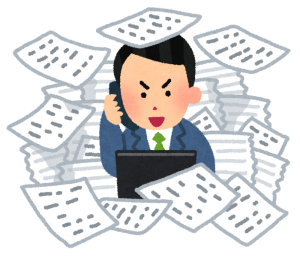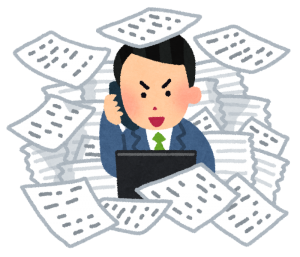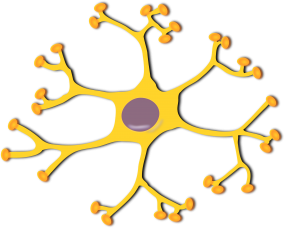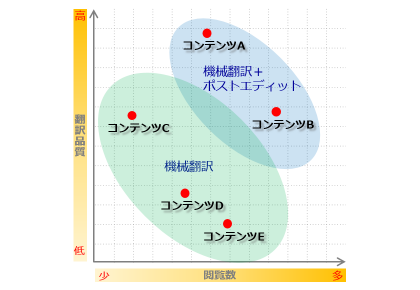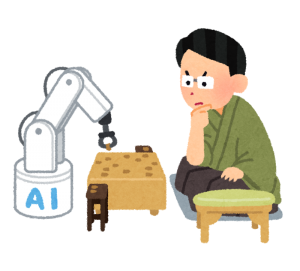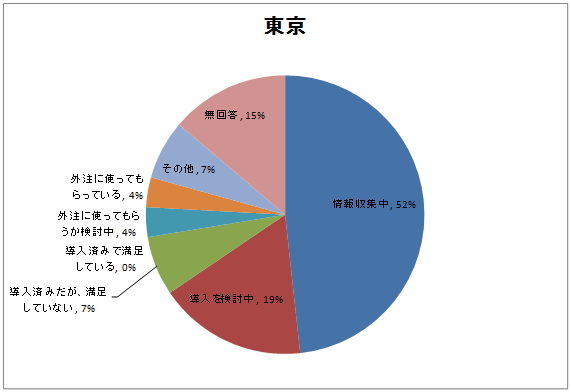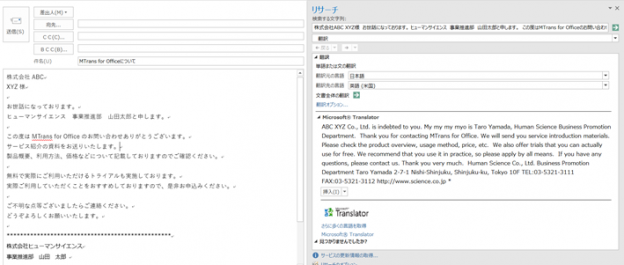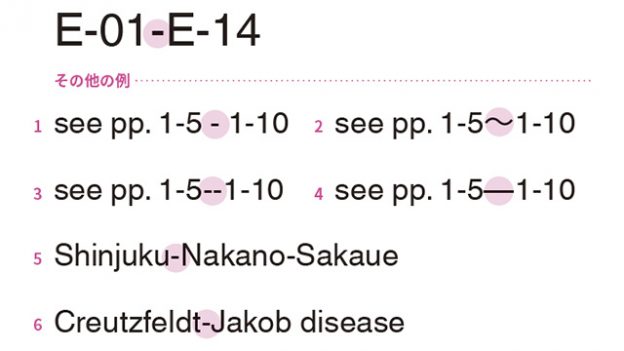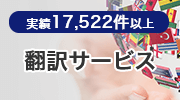When it comes to machine translation, the focus is often on cost reduction and lead time reduction, but recently, there has been an increase in companies implementing machine translation as one of their efforts for "work style reform" and "productivity improvement" within the company.
For example, at a manufacturing company, by introducing machine translation to the internal translator's responsibility for Japanese-English translation,
productivity has improved by about 20%.
In addition, there are cases where the introduction of machine translation has triggered not only productivity improvement, but also effects from the perspective of business improvement such as:
- Improvement of original document quality
- Standardization and optimization of quality
- Accumulation and effective utilization of translation assets
- Production of effects from the perspective of business improvement
.
Today, we will introduce the effects of business improvement through the implementation of these machine translations.
●The effects of introducing machine translation are not just limited to improving productivity.
[Improving the Quality of Original Documents]
Many companies seem to have issues with the quality of their Japanese and English writing created in-house.
However, even if they try to improve the quality of their writing, such as manuals, it is often difficult to get the benefits of improving writing quality understood within the company.
As a result, it is common to hear cases where efforts to improve writing quality are not progressing due to lack of cooperation from writers or approval for the necessary resources.
This can lead to a stagnant situation where no progress is being made.
We often hear about these types of cases.
When it comes to efforts to improve the quality of the original text, there are often voices questioning whether it is necessary to spend so much time and resources, or if there is even a need for improvement since there are no complaints from users.
However, when introducing machine translation, by improving the writing style to make it easier for machine translation to process,
the quality of machine translation can be improved,
and the effect of improving productivity can be shown in numbers.
This allows you to visually feel the need for improving the quality of the original text.
As a result, it becomes easier to obtain cooperation and approval for the cost of improving the original text within the company. This is why it is important to improve the quality of the original text.
In one company, the introduction of machine translation has prompted the establishment of guidelines for creating original documents within the company. They are working towards improving the quality and standardization of manual text.
[Standardization and Optimization of Translation Quality]Introducing machine translation can also have an effect on standardizing and optimizing translation quality.
In many companies, the translation quality varies depending on the person in charge,
and there are still many cases where the desired translation quality has not been determined.
As a result, the translation quality may not be suitable for the intended use or target audience of the content.
There may also be cases where the quality is poor or excessive.
In cases like this, introducing machine translation can be a trigger to reevaluate the optimal level of translation quality within the company.
In order to introduce machine translation, set the target quality level for post-editing
and establish guidelines for how to perform post-editing from which perspective
By standardizing and optimizing, it is possible to visualize the personalized qualityand make it visible
to standardize and optimize.
Many companies that have introduced machine translation,
set quality goals for each content and language,
and operate machine translation by standardizing and optimizing quality from the perspective of post-editing.
The introduction of machine translation can also serve as an opportunity to share and accumulate translation assets such as past translation memories within the company and make effective use of them.
There are often concerns that translation assets such as translation memories and glossaries are managed by individual translators or departments and are not shared within the company.
We often hear about the frustration of not being able to share these valuable translation assets within the company.
This can be a starting point for efforts to share and utilize translation assets within the company.
In order to improve the quality of machine translation, as you all know,
it is important to manage and effectively utilize past translation assets such as translation memories and glossaries.
As a result, many companies are now working on organizing and managing translation memories and glossaries that were previously not managed, using machine translation as a starting point.
A system has been implemented through the introduction of machine translation to accumulate translation memories and terminology glossaries as assets for the entire company, rather than individual assets.
This system allows for the accumulation of translation memories and terminology glossaries as assets for the entire company, rather than individual assets.
●Summary
Today, we introduced the benefits of implementing machine translation, not just for "cost and lead time reduction" and "improving productivity".
We hope you will consider using machine translation as one of the ways to improve translation tasks within your company.
We encourageyou all to consider implementing machine translation as a catalyst for improving translation tasks within your company.
Why not give it a try?
On 5/31 (Wed), we are planning to hold a free open seminar with the theme of "Supporting the Introduction of Machine Translation for Workstyle Reform".
For more details on the seminar, please click here.
We are planning to introduce examples of business improvement through the implementation of machine translation by various companies, so if you are interested, please join us!
If the form is not available, please send your inquiry via email to hsweb_inquiry@science.co.jp.
Alternatively, please feel free to contact us at TEL: 03-5321-3111 or by phone.
——————
★Machine Translation Seminar Video Now Available★
▼Please check the following video content page.
http://www.science.co.jp/mt/moviecontent.html
——————
Blog Writing Team

Tokuda Ai
・As a machine translation consultant, I provide consulting services for Japanese companies on machine translation implementation and process building.
・I place importance on the quality of the source text, which affects multilingual translation, and also provide consulting services for manual creation suitable for machine translation in the Japanese writing process.
・I also give presentations on the following topics related to machine translation.
- Presentation at the 23rd JTF (Japan Translation Federation) Translation Festival in 2013
"Approaches to Machine Translation in Multilingual Environments
- From the Perspectives of Evaluation and Process"
- Presentation at the 2014 AAMT (Asia-Pacific Association for Machine Translation) Machine Translation Fair
"Mastering Machine Translation - Improving Quality and Productivity"

